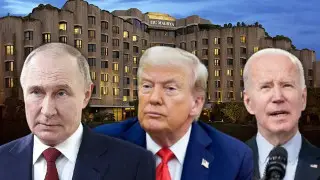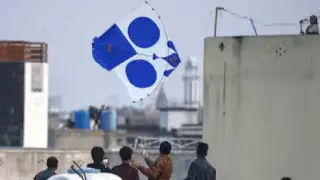
125 Fighter Jets
International News: According to U.S. Defense Secretary Pete Hegseth, the operation involved 14 GBU-57 bunker-buster bombs, designed to penetrate fortified underground nuclear labs, alongside 24 Tomahawk cruise missiles for strategic target destruction. More than 125 advanced fighter aircraft, including F-22 Raptors and F-35s, provided coordinated support from land bases and carriers in the Persian Gulf.
Sources confirm that former President Donald Trump personally authorized the operation after classified intelligence suggested that Iran was nearing a nuclear breakout threshold. Trump's national security team advised a swift and overwhelming strike to neutralize what they deemed an “imminent global threat.”
The attack targeted three high-priority sites—Fordow, Natanz, and Isfahan. Satellite images and early drone footage indicate that key centrifuge installations at Fordow have sustained extensive damage. At Natanz, large explosions reportedly disrupted uranium enrichment activities, while Isfahan’s suspected R&D hub was rendered inoperable.
Speaking from the Pentagon, Secretary Hegseth declared the mission “a tactical success with strategic implications.” He emphasized that civilian areas were not targeted and that the objective was singular: to degrade Iran’s nuclear weaponization capacity. International watchdogs like the IAEA are being briefed.
Iranian media acknowledged “limited damage,” but military sources warned of “consequences beyond calculation.” Supreme Leader Ayatollah Khamenei called the U.S. action “an act of war,” and Iran's Revolutionary Guard hinted at asymmetric retaliation in the coming days, possibly via proxy forces across the region. While Israel lauded the operation as “timely and necessary,” Russia and China condemned the attack, urging restraint. The UN Security Council has called for an emergency session. Meanwhile, global oil prices jumped nearly 7% amid fears of further escalation in the Gulf.













Copyright © 2025 Top Indian News
